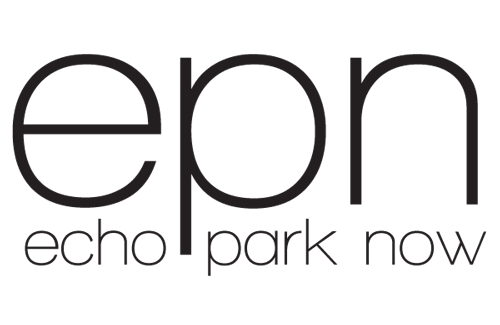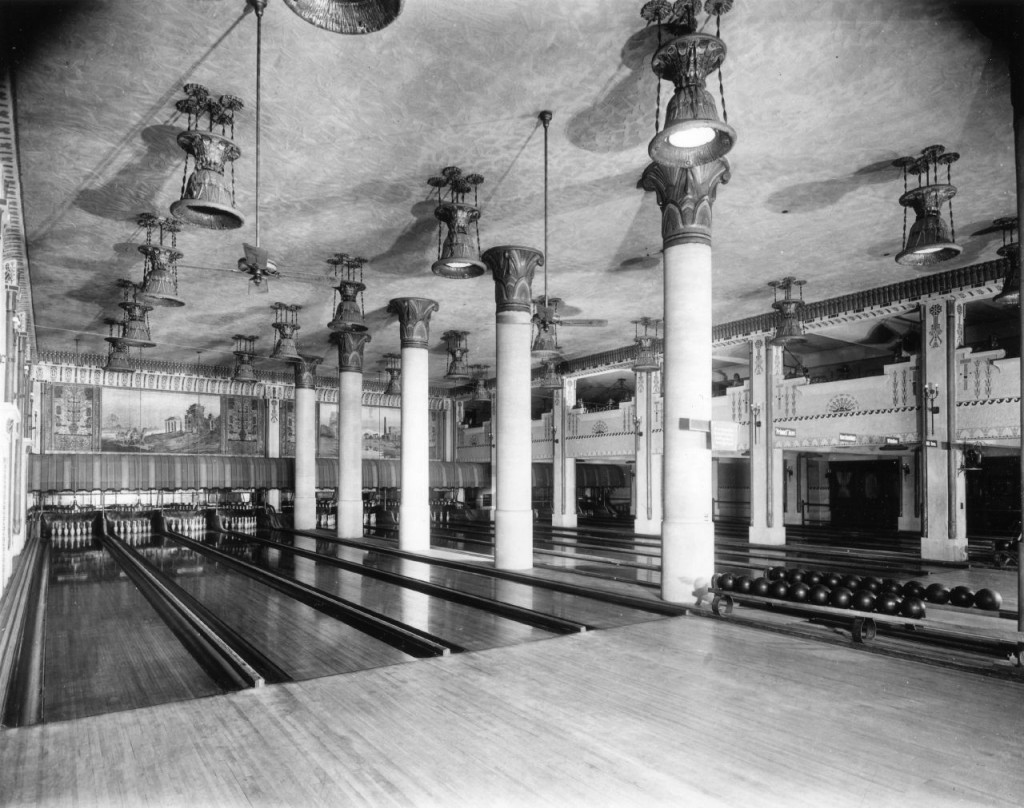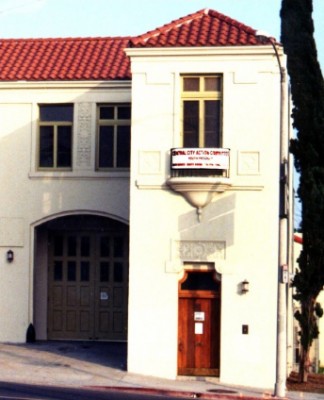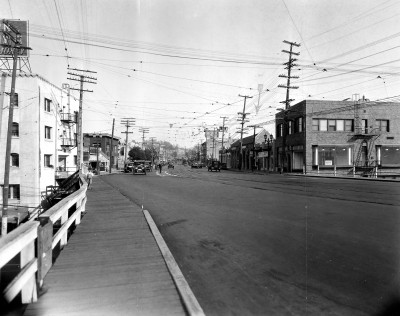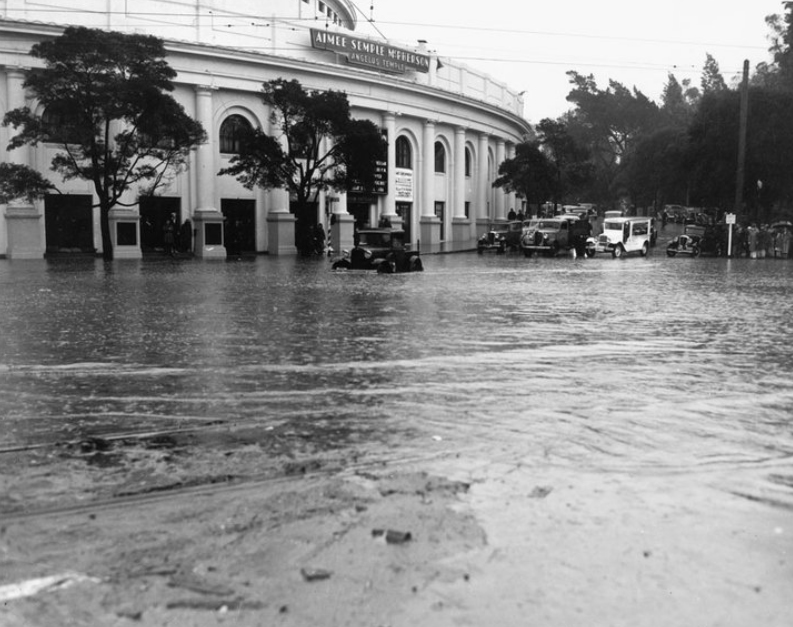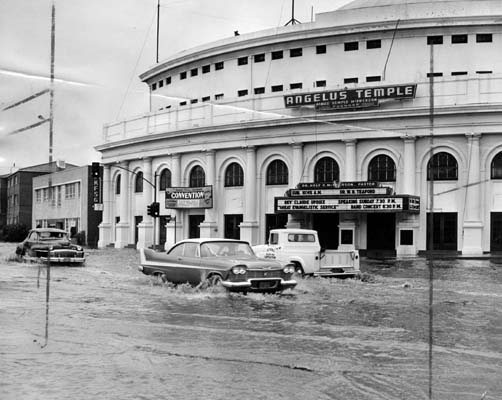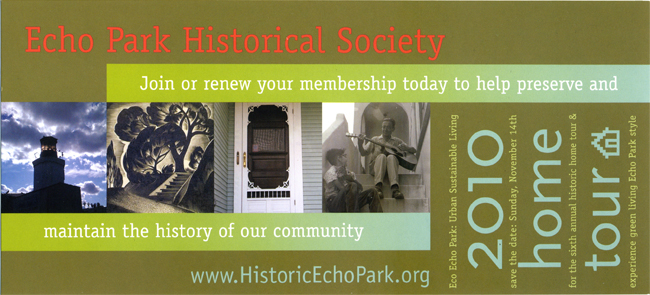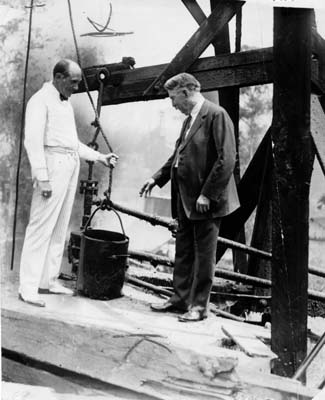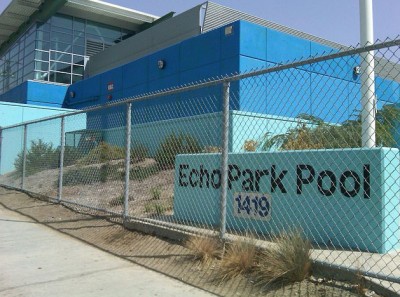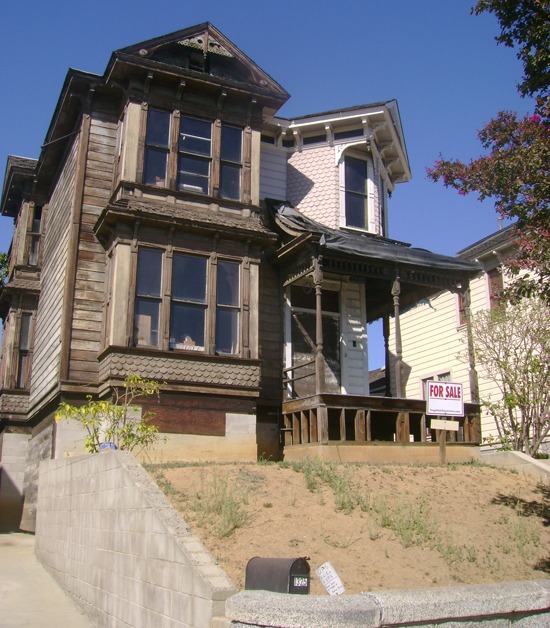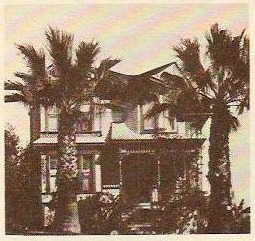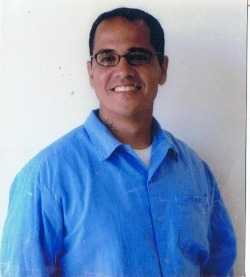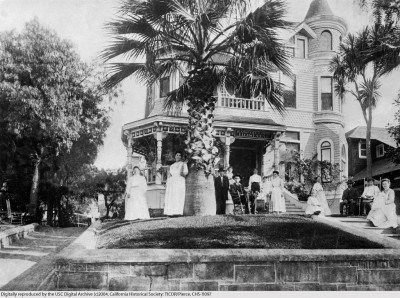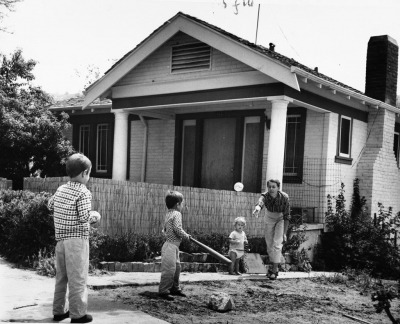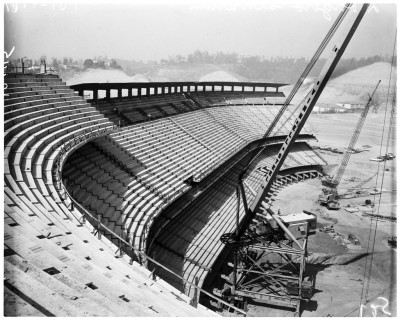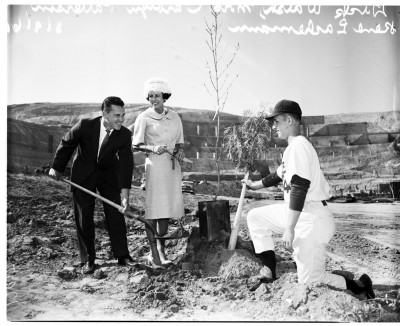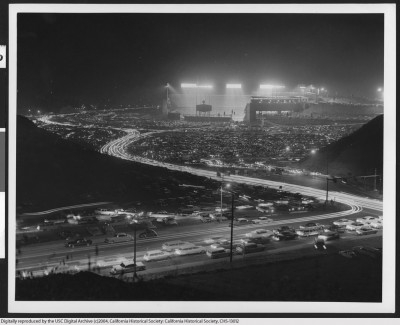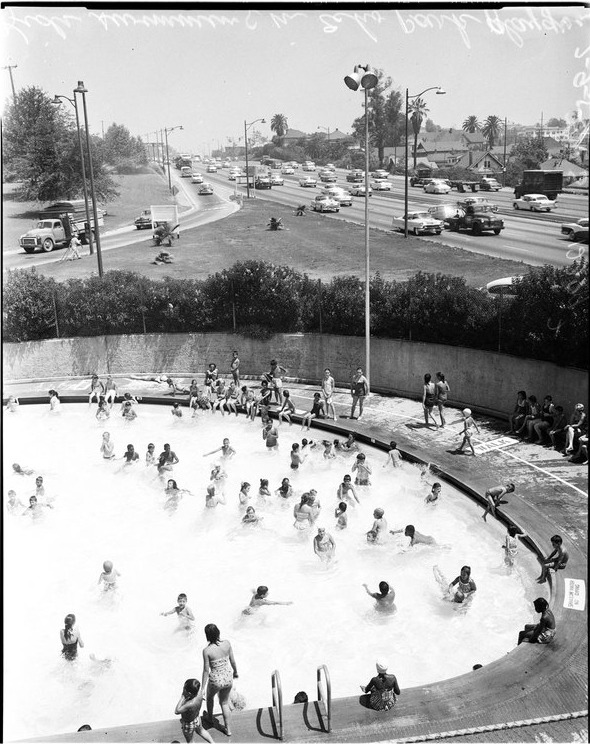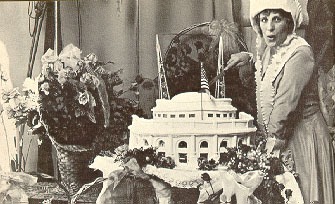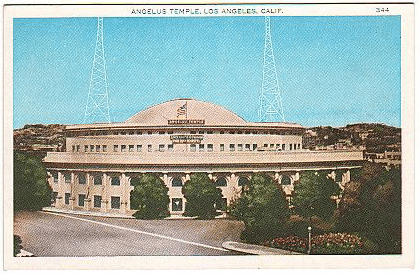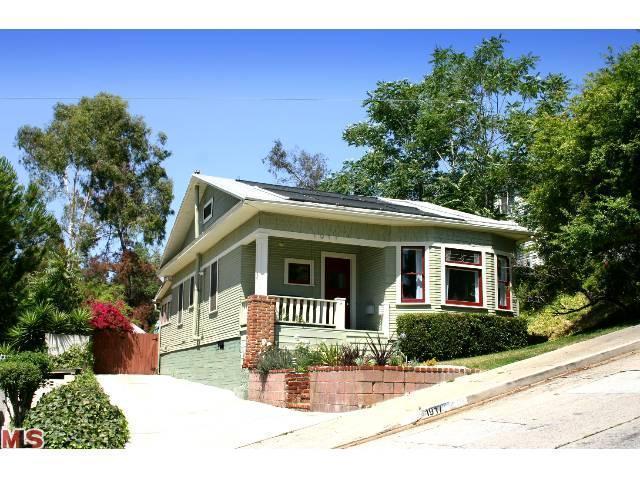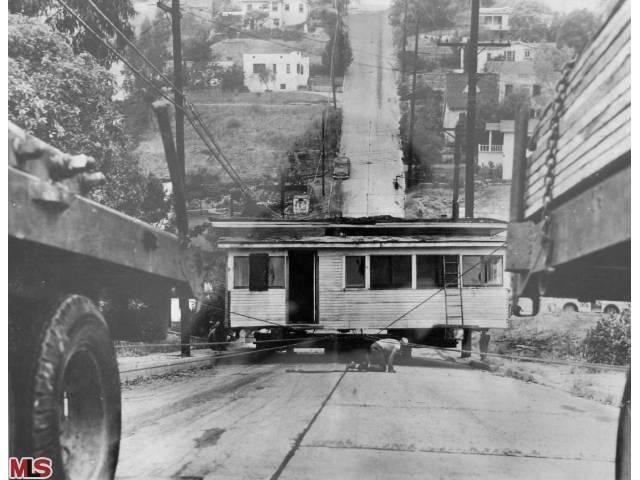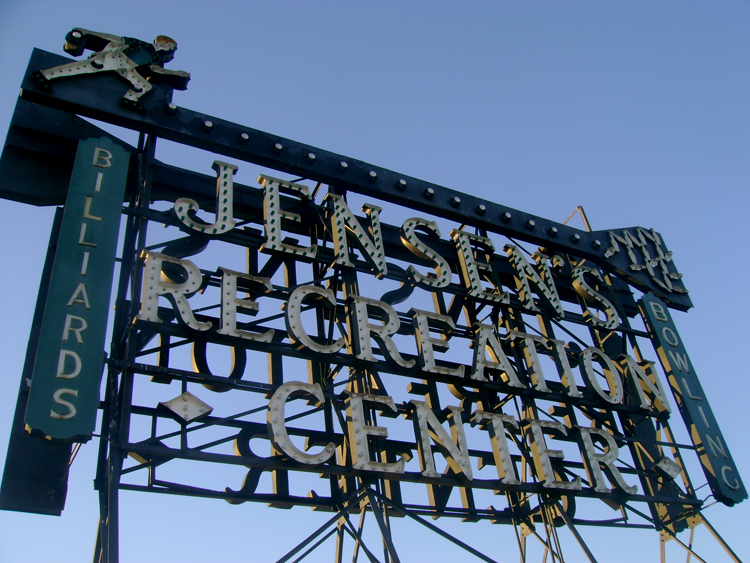
Photo by Echo Park Now
The Jensen’s Recreation Center building has always been a favorite Echo Park monument of mine. A historic cultural monument since 1998, the 86-year-old building has undergone quite a few changes inside.
The building was built by German immigrant Henry Christian Jensen in 1924 and designed by architect E.E.B. Meinardus. Originally, it was a bowling alley with a pool hall at street level with 46 apartments on the other two floors. The Echo Park Historical Society website describes the space as catering to mostly males throughout the 1930s and ’40s. Even though the storefronts might not look exactly the same as the original structure, thankfully the Beaux Arts and Italianate inspired ornamentation that wraps around the outside of the building still exists.
The bowling alley is no longer there, but the sign featuring a bowling figure remains on the roof of the building. The 28 feet wide x 17 feet tall sign has 1300 red, green and white incandescent lightbulbs. An interesting fact: even though neon was a more popular application for signs in the 1920s (especially this size!), this one maintains the incandescent light bulbs.

Relighting of the sign. Photo from Paul Furlong
In 1997, after 50 years of neglect and the sign unlit, it was restored and relit through a cultural affairs grant. We’re not exactly sure how long the sign was lighting up the Rec Center roof, but we do know it was fixed and relit again in 2005. However, that lasted only one month, and the sign has been dark ever since.
Lately there’s been some great headway to relight the sign. The Echo Park Historical Society received $5,000 from an LA County Historic Preservation Society grant. Echo Park residents, fans of history, and Echo Park Improvement Association members have also privately donated to fix and maintain the sign as well. And just this week, the Greater Elysian Echo Park Neighborhood Council approved the allocation of $2,500 to the Historical Society for the restoration of the sign.
Hopefully we’ll see the sign relit (and maintained) some day soon!
If you’d like to donate to the Echo Park Historical Society for the restoration and upkeep of the sign, click here for the EPHS website.
